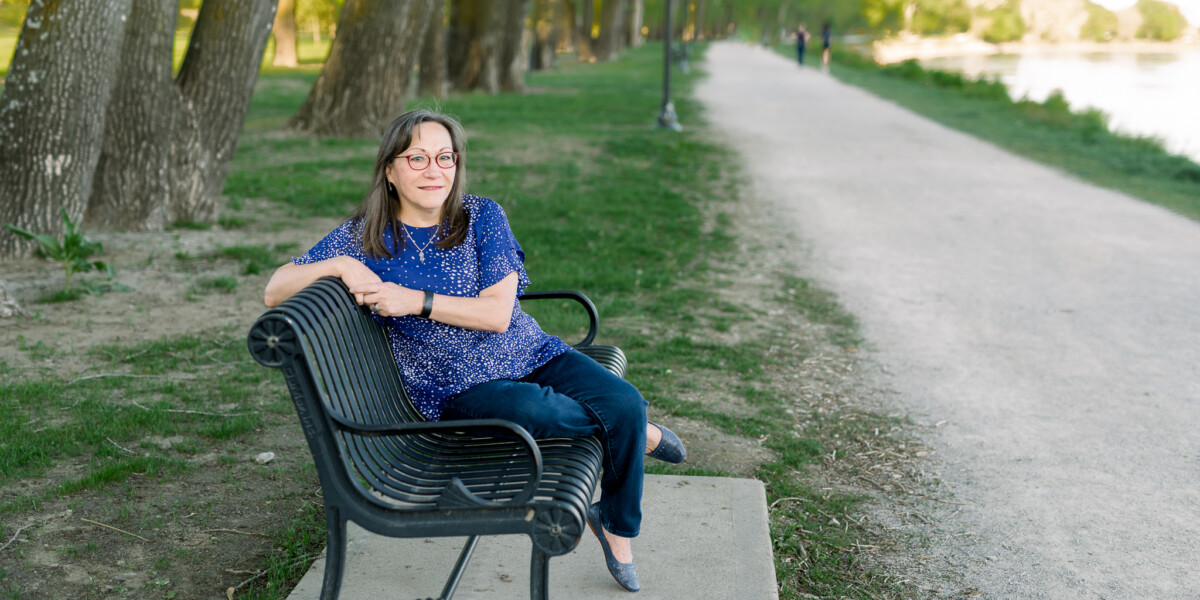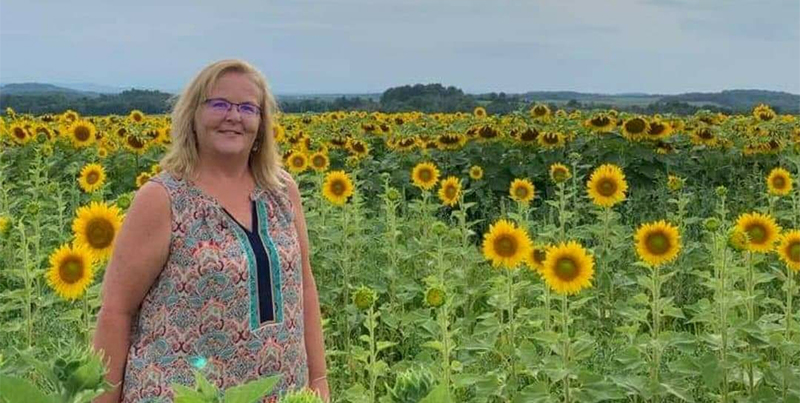Death is hard. Though it’s a natural process we will all go through eventually, it can be difficult to know what to do or say when a loved one dies, especially when children have questions about death. On top of that, it can be hard to cope with our own mortality.
The University of Vermont’s End-of-Life Doula Professional Certificate instructors have been prolific about their experiences as doulas, supporting the dying and their families while also teaching aspiring doulas. The end-of-life books featured below can help you through the process of death and dying. They offer guidance, support, and advice from experts who devote their time to helping others cope with death.
All of the authors are End-of-Life Doulas including current instructors, Diane Button, Matilda Garrido, and Angela Shook; former students and graduates of UVM’s End-of-Life Doula program Gabby Jimenez and Hemali V. Vora, as well as the former lead instructor at UVM, Francesca Arnoldy. UVM’s End-of-Life Doula program now has graduated over 3,000 students.
End-of-Life Doulas, also known as death doulas, are becoming more well known as a cultural shift occurs in the way people think about death. Instead of avoiding talking about or preparing for death there is a desire to be more open, proactive, and trusting of the process.
“People who are not necessarily terminally ill or have a serious medical condition might reach out to an end-of-life doula for preparation because we are all mortal, and this is the one thing we all have in common. So many of us will begin to prepare for our end of life in advance, perhaps even in good health.”
Diane Button
Button says the COVID-19 pandemic accelerated the movement significantly, as people have had to face the risk of death associated with the disease. As a result, people are seeking out the kind of holistic, person-centered care that doulas provide.
Reading these books may help you come to terms with death and give you, and those you care for, including children, the necessary tools to cope with death and say goodbye to a loved one.
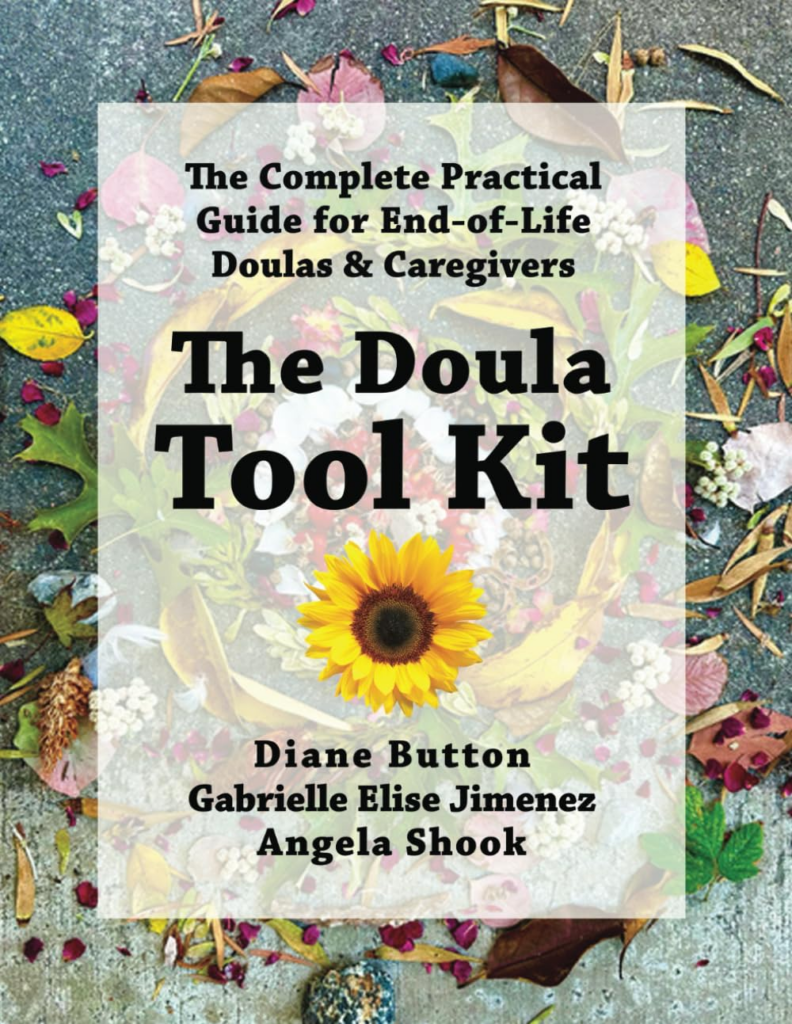
The Doula Tool Kit: The Complete Practical Guide for End-of-Life Doulas & Caregivers by Diane Button, Angela Shook, and Gabby Jimenez
Written by two UVM End-of-Life Doula program instructors, Diane Button and Angela Shook, with support from Gabby Jimenez, this Doula Tool Kit helps readers discover practical end-of-life tips and tools that will help to bring peace, understanding, and even purpose to the process of dying. It is filled with proven methods and templates that the authors have developed over the years. Their goal is to share these personal techniques to help you confidently guide and support others in their final months, days, and hours.
“By sharing our hearts, our compassion, and profound end-of-life experiences, we hope to comfort and inspire you as you do this work. Please take what we’ve shared and make it your own. We are a community, and we are here to lift one another up and support each other always. As you explore our many experiences, tips, tools, and secrets, remember that we do not do this work alone.”
The Doula Tool Kit includes:
- Powerful and practical doula tools and tips.
- Detailed intake methods, questions and forms.
- Stories and prompts for meaningful life reviews.
- Proven and creative ideas for legacy work.
- Comprehensive vigil planning checklist and forms.
- Sample agreements and forms for MAID clients.
- How to be a successful companion animal doula.
- Important keys to ritual and ceremony in your work.
- Key stories, lessons & reflections from the authors.
- Doula bag supply lists, tips and must-have items.
Simon’s Journey by Matilda Garrido
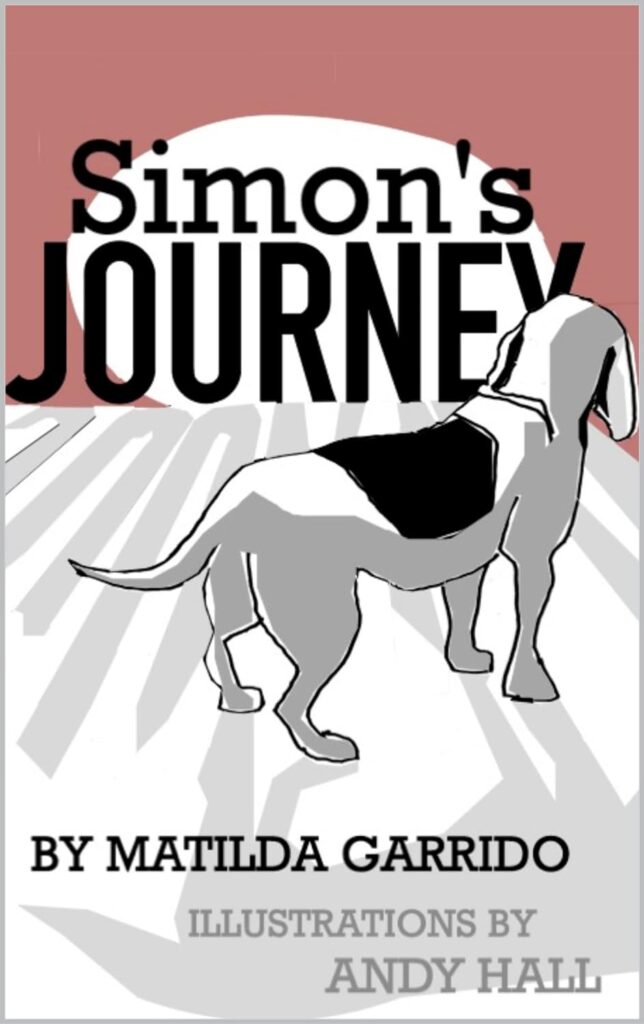
Simon’s Journey is written by another UVM End-of-Life Doula instructor, Matilda Garrido. Garrido is a certified thanatologist (through the Association for Death Education and Counseling) and holds masters degrees in Thanatology and Bioethics. She wrote the book to explore what happens to beloved pets when they die. Simon’s Journey tells the story of a little dog called Simon as he embarks on a great journey through an afterlife and rebirth. As Simon confronts his fears, he learns to appreciate his own strength and courage. When he is called upon to share his life and loving nature with the world, his story culminates with a surprising and heartfelt ending.
“I originally wrote this little book for my final project for the Foundations in Contemplative Care program I took at the New York Zen Center in 2018-2019. It was inspired by a classmate named Betty who lost her dog during our class and spoke about praying for him on his journey through the Bardo and her hopes that he would be reincarnated as a little boy. I really consider this book as divine inspiration as I’d never thought of writing a children’s book ever before, and it all came together perfectly.”
Map of Memory Lane by Francesca Arnoldy
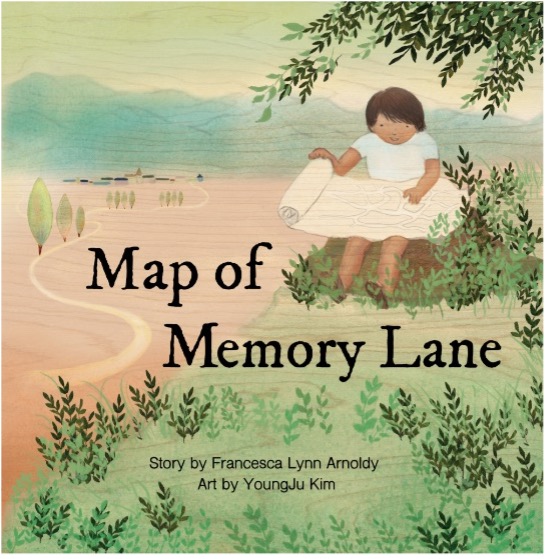
An invitation for children and their adults to explore and share memories as a coping mechanism for enduring loss, Map of Memory Lane helps readers lean on the special times as a balm of sorts. We each have a “Memory Lane” we can visit simply by pausing, closing our eyes, and reminiscing.
“Sometimes I take a trip down Memory Lane when I’m missing someone,” explained Nana. “It doesn’t take away all the sadness, but remembering makes me smile. Then, my heart aches a little less.” – Map of Memory Lane, Francesca Arnoldy
“My goal with this project was to gently introduce a difficult topic while making it as accessible as possible,” Arnoldy said. “The main character, Lee, is depicted as gender-ambiguous and multiracial. The messaging is secular and leaves room for readers to discuss their beliefs. The memories included are sweet and simple, not extravagant. These intentional efforts aim to enable all kids to see themselves within in the story.”
A companion workbook for children and their caregivers is also available to reinforce the healing power of heartfelt memories.
“We need to include children in conversations and experiences based on the child’s developmental stage, desire for information/inclusion, and each family’s preferences and norms. Far too many adults carry wounds from their past as a result of not being allowed to say goodbye or not having their questions answered.”
Francesa Arnoldy
To help people heal, Arnoldy says doulas utilize silence, curiosity, and courage to draw near to those facing the hardest things, including the youngest among us.
Dear Death: Finding Meaning in Life, Peace in Death, and Joy in an Ordinary Day by Diane Button
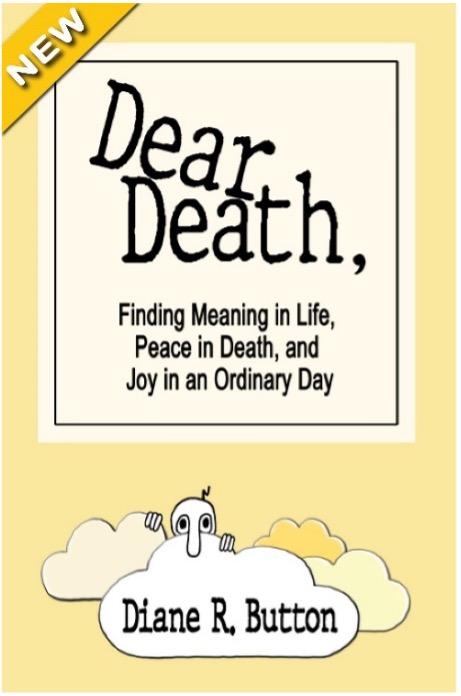
Both practical and inspirational, Dear Death explores what ultimately brings us joy in life and peace in death. It asks, how can we heal, change, forgive, and grow, even until the very last hours of life?
“I have always been fascinated by those people who seem to live everyday life with joy, and those who face terminal illness and their end-of-life with a sense of peace,” Button said. “Through research and interviews, I found some wonderful similarities amongst people who were entering into the last stages of life with a calmness and appreciation for a life well-lived. But, it wasn’t until I began working as an end-of-life doula that I clearly recognized the need for Dear Death, the book.”
Button worked with fellow UVM instructor and End-of-Life Doula, Dr. Virginia Chang, as the editor of the book.
“Having an editor who is also a doula meant the book stayed focused on our heartfelt work. Virginia understood my intention, my desire for inclusivity, and the message of each section, which was an exploration of the doula heart in action.”
Diane Button
Dear Death is different from other books about end-of-life in that it focuses primarily on how to live your life so that when the end nears, Buttons says you’ll more easily find a sense of peace.
“With Dear Death, I wanted to write something that offered some general guideposts for end-of-life planning but focused mostly on how to live well from today until the end-of-life because of this knowledge, awareness, and information about what matters most.”
Sacred Death: 25 Tools for Caregivers by Hemali V. Vora
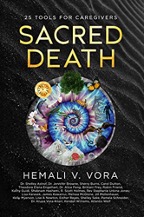
Hemali V. Vora, MPT, an end-of-life doula and a sole owner and practitioner of Hemali Vora, Health and Wellness, LLC. has written a new book called Sacred Death: 25 Tools for Caregivers in part to guide people on the path to feeling good about their legacy. It began after the experience she had with her own father’s death in 2010.
“I had that existential crisis of ‘who am I?’ When I saw his legacy, I went on that path of ‘what is my legacy? What am I here for? What is my purpose and intention?’” Vora said. “The more I opened up to death and opened up to the sacredness of it, I started accepting life. How beautiful and magical life is. Really living my life. And I wanted to share that with the world.”
Sacred Death includes chapters written by 25 end-of-life experts, coaches, healers, therapists, and practitioners, including Vora. It is aimed at helping healthcare workers, caregivers, and anyone concerned with their mortality to have a better relationship with death. Another graduate from UVM’s doula program, Sherry Burns, also contributed a chapter to the book.
Some of the topics touched upon are: transforming from caregiving to self-caring; listening and watching for messages from the other side; ways forgiveness leads to self-love and inner peace; creating rituals to say goodbye; and practicing conscious dying to stay present and connected.
Vora’s chapter about legacy work fulfills her lifelong desire to talk deeply about death.
“As a young person, I used to say, ‘there is something about death in me.’ And I just didn’t know what that meant,” Vora said. Before they [a loved one] passed away I felt their spirit around me, moving or struggling, trying to figure out what’s going on…and me calming them down.”
Learn more about the End-of-Life Doula Certificate program and UVM and read stories from program graduates.
Editor’s note: This story was originally published in December 2021 and has since been updated.



